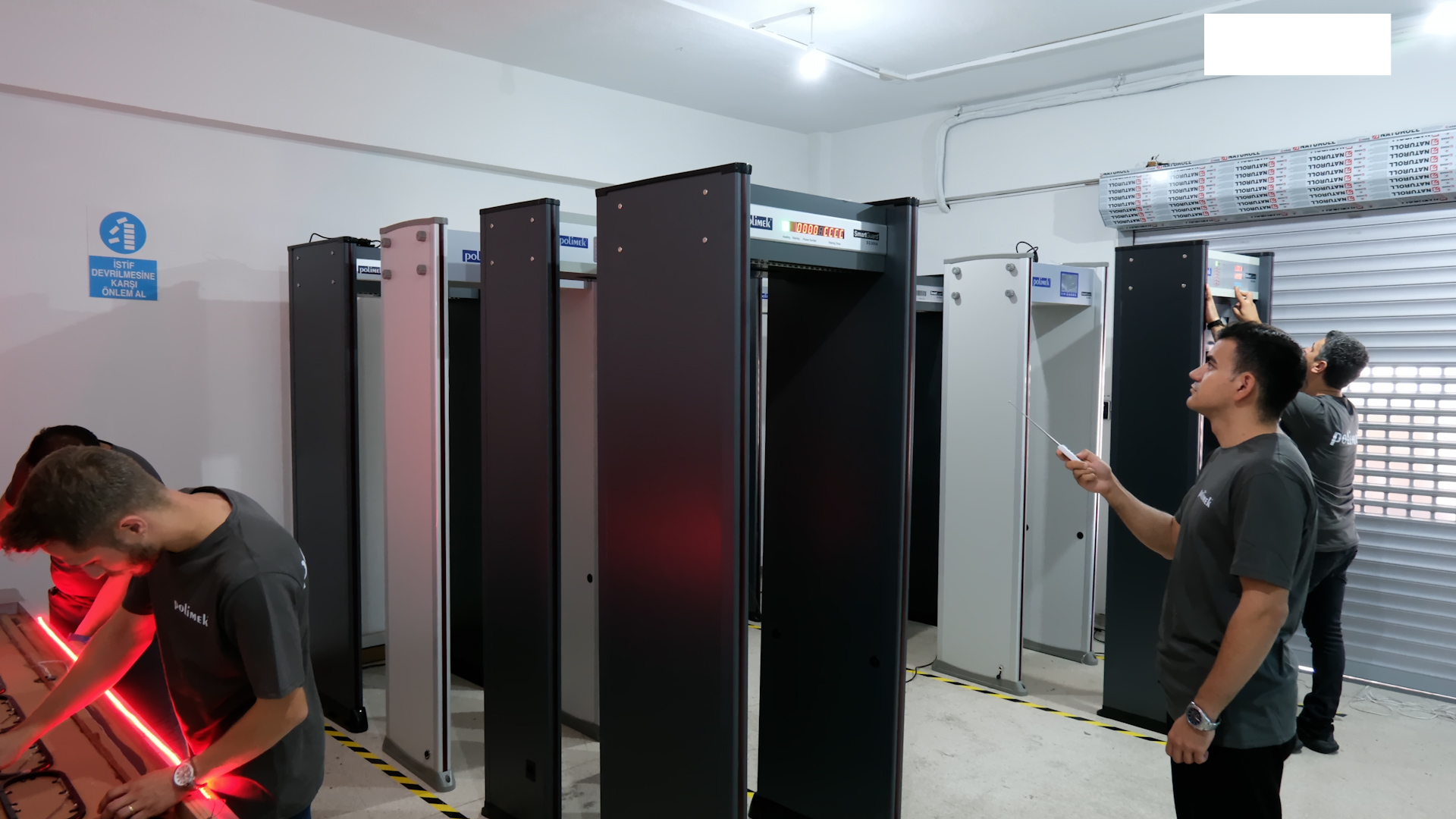The Indispensable Safety Tool for Secure Areas: Walk-Through Metal Detectors
As the importance of security continues to grow in today’s world, institutions and public spaces require more advanced and effective security systems. At this point, walk-through metal detectors—thanks to their technological infrastructure and ease of use—have become an essential part of entrance security.
So, how do walk-through metal detectors work, where are they used, and why are they so important? Let’s take a closer look together.
What is a Walk-Through Metal Detector?
Walk-through metal detectors are electronic security devices, usually consisting of vertical columns, used to detect metallic objects on individuals. Commonly referred to as “walk-through metal detectors,” these devices are designed to scan people as they walk through, identifying weapons, knives, and other potentially dangerous metal items.
The First Line of Defense
These detectors are placed at entry points, forming the first layer of a facility’s overall security. Since every individual entering a space passes through the system, potential threats can be detected before reaching the building or event area.
They help security personnel save time and reduce the likelihood of human error in threat detection.
A Brief History of Walk-Through Metal Detectors
Walk-through metal detectors were first used in the 1960s, particularly in airports. At the time, security measures were limited, but as threats to aviation increased, the importance of such devices became evident. Over time, technology advanced, making these detectors more sensitive and intelligent. Today, they have evolved beyond just metal detection and can even analyze behavior with the help of advanced sensors.
Expanding Areas of Use
Walk-through metal detectors are now actively used in a wide range of settings beyond airports:
- Courthouses and Government Buildings: Security in official institutions is critical. Detectors ensure regular, thorough screening.
- Schools and Universities: Used at entrances to ensure the safety of students and staff.
- Fairs, Concerts, and Event Venues: Essential for controlling entry and ensuring safety in large crowds.
- Shopping Malls and Hotels: Used in crowded public spaces to manage safe entry.
- Correctional Facilities: Key for managing controlled access.
- Defense Industry Sites, Military Bases, Embassies: In high-security areas, walk-through metal detectors are indispensable.
Types of Walk-Through Metal Detectors
Different models are designed to meet different needs. The main types include:
- Single-Zone Detectors: Alert when metal is detected but do not indicate the specific location on the body. Ideal for low-traffic areas.
- Multi-Zone Detectors: Identify the specific area (e.g., head, torso, leg) where metal is located, saving time during inspections.
- Portable Models: Easily transported and set up for temporary events like concerts and trade shows.
- Outdoor-Ready Models: Resistant to water, dust, and weather conditions—ideal for open-area entrances.
Technology-Driven Security
Modern walk-through metal detectors go beyond basic metal detection and offer advanced features such as:
- Zonal Detection: Can show the exact body part where metal is located.
- High Sensitivity Levels: Capable of distinguishing between a coin and a weapon.
- High Throughput: Efficiently scans dozens of people per minute.
- AI-Powered Analysis: Some models use artificial intelligence for behavior analysis, enhancing overall security.
- Environmental Durability: Outdoor models are built to resist dust and water.
Difference Between Walk-Through Metal Detectors and X-Ray Machines
Although often used together, these two systems serve different purposes. Walk-through metal detectors scan people for metallic objects, while X-ray machines scan bags, suitcases, and personal belongings. When used in tandem, they ensure the security of both individuals and their possessions—completing the security chain.
Key Factors to Consider When Choosing a Walk-Through Metal Detector
Choosing the right detector is crucial for effective security. Consider the following when making a selection:
- Detection sensitivity
- Zonal detection capability
- EMC and safety certifications
- Ease of installation
- Energy efficiency and maintenance needs
- Price/performance ratio
- Warranty and technical support
Additionally, partnering with a local manufacturer that offers strong technical service and support can provide long-term advantages.
Frequently Asked Questions (FAQ)
Do walk-through metal detectors harm pacemakers or medical devices?
No. High-quality devices are manufactured according to international health standards and do not interfere with medical devices.
Will the detector alarm if I have keys, a watch, or a belt?
It depends on the sensitivity settings. In high-security zones, such items may trigger the alarm.
Which model is suitable for me?
The size of your facility, the level of traffic, and your security requirements will determine the right model. Expert consultation is recommended.
Conclusion
Walk-through metal detectors are more than just devices—they are a strategic security measure. When used correctly and in the right places, they can prevent major incidents. Strong control at the entrance translates to a safer, more peaceful environment inside.
If you’re looking to maximize the safety of your institution or event, it’s time to explore advanced walk-through metal detector solutions.
Remember: Security starts with precaution!




